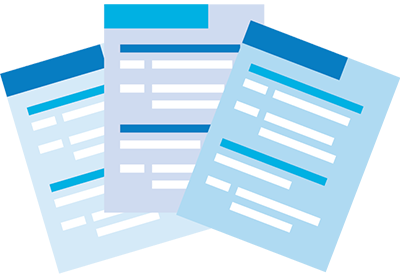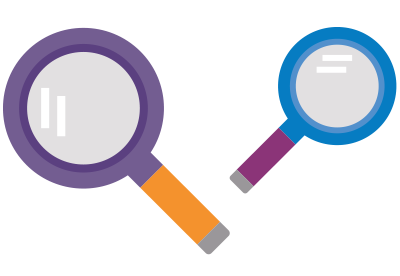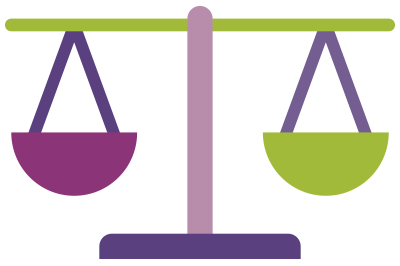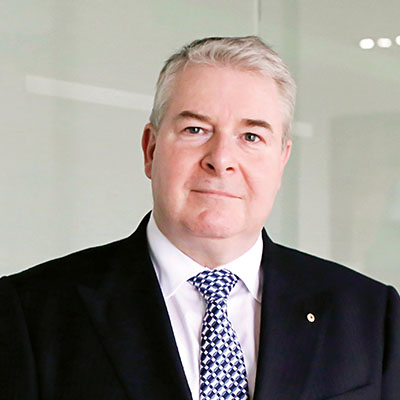Chinese Medicine Board of Australia
2015/16 Annual Report Summary
At a glance: Regulating Chinese medicine practitioners in 2015/16
This annual report summary provides a snapshot of our work regulating more than 4,700 registered Chinese medicine practitioners in the financial year to 30 June 2016.
A more detailed profile, encompassing data relating to all 14 National Boards in Australia, is published in AHPRA and the National Boards’ 2015/16 annual report
657,621 health practitioners in 14 professions registered in Australia in 2015/16
4,762 registered Chinese medicine practitioners
This is 0.7% of the registrant base

Registration grew by 6% from 2014/15

55% women
45% men

1,318 registered students; down 11%1

742 new applications for registration received

933 criminal history checks were carried out for Chinese medicine practitioners, resulting in:
60 disclosable court outcomes;
No regulatory action needed to be taken.
28 notifications (complaints or concerns)2 were lodged with AHPRA about Chinese medicine practitioners

25 notifications were closed3

26 complaints were made about possible statutory offences relating to Chinese medicine services
12 statutory offence matters were closed
Note:
- Compared with 2014/15.
- This figure refers only to matters managed by AHPRA. For total notifications received about the profession, including matters managed by the Health Professional Councils Authority (HPCA) in NSW, see Table 5.
- This figure represents complaints managed and closed by AHPRA, and excludes matters managed by the HPCA.
About this report
This report provides a profession-specific view of the work of the Chinese Medicine Board of Australia (the Board) to manage risk to the public and regulate the profession in the public interest in 2015/16.
The Board has worked in close partnership with the Australian Health Practitioner Regulation Agency (AHPRA) to provide all Australians with a safe, qualified and competent workforce under the National Registration and Accreditation Scheme (the National Scheme).
Information included in this report is drawn from the data published in the 2015/16 annual report by AHPRA and the National Boards and was correct as at 30 June 2016.
Whenever possible, historical data are provided to show trends over time, as well as comparisons between states and territories.
For a wider context, and to compare the profession against national data from all 14 professions regulated by National Boards under the National Scheme, this report should be read in conjunction with the 2015/16 annual report. You can download the report.
Message from the Chair, Chinese Medicine Board of Australia
The Board’s major role under the Health Practitioner Regulation National Law, as in force in each state and territory (the National Law), is to protect the public from harm.
Over the past year, the Board continued to work with its key partners in the National Scheme to effectively and efficiently regulate the Chinese medicine profession in Australia. Setting appropriate professional standards is an important part of this. In November 2015, the Board published its Guidelines for safe Chinese herbal medicine practice – a significant policy document.
One of the key objectives of the National Scheme is to facilitate the provision of high-quality education and training of health practitioners. We thank the Chinese Medicine Accreditation Committee for effectively delivering its core function of assessing and accrediting Chinese medicine degree programs and courses so graduates are eligible to apply for registration upon completion of their training.
The Board could not do its work without the support of AHPRA. On behalf of the Board, I thank Mr Martin Fletcher, CEO, and all AHPRA staff for their ongoing hard work and support.
The membership of the Board changed during the year when we said farewell to Community Member Ms Esther Alter at the end of August 2015. I again express the Board’s gratitude for her contribution and effort towards the Board’s work throughout her term of appointment.
I would like to acknowledge and thank all members who contributed to the work of the Board in the past year and who, through their hard work, dedication and collective wisdom, ensured the effective delivery of Chinese medicine regulation in Australia.

Professor Charlie Xue
Chair, Chinese Medicine Board of Australia
Members of the Board in 2015/16
- Professor Charlie Xue (Chair)
- Ms Esther Alter (until 30 August 2015)
- Ms Christine Berle
- Dr Liang Zhong Chen
- Mr Ian Dummett (from 29 February 2016)
- Dr Anne Fletcher
- Dr David Graham (from 30 March 2016)
- Dr Di Wen Lai
- Mr Roderick Martin
- Professor Craig Zimitat
During 2015/16, the Board was supported by Executive Officers Debra Gillick and Lynda Pham.
More information about the work of the Board, including codes, guidelines and information on registration standards, can be found on the Board website.
Message from the AHPRA CEO and the Agency Management Committee Chair
Since the National Scheme began six years ago, AHPRA has worked in partnership with the National Boards to ensure that the community has access to a safe and competent health workforce across 14 registered health professions Australia-wide.
We rely on the expertise and insights of the National Boards to make decisions about the 657,621 health practitioners currently registered in Australia in the interests of the Australian public. It’s a role that Board members commit to with dedication and passion, and the community can be assured that its safety is always their number-one priority.
As at 30 June 2016, there were 4,762 registered Chinese medicine practitioners. While these practitioners represent less than 1% of the total registrant base, their profession has unique complexities. Overseeing the registration and regulation of the profession is the Chinese Medicine Board of Australia, with valuable input from professional and community groups.
The Board upholds the values of the National Scheme by taking a risk-based approach to regulatory decision-making and policy implementation, with a continued focus on finding ways to improve effectiveness, efficiencies and timeliness.
The Board’s professional insights are integral to successful and fair regulation of practitioners. For example, the Board consulted widely before publishing its Guidelines for safe Chinese herbal medicine practice, which allow a two-year transition before the guidelines formally take effect. This enables practitioners time to make their practice compliant and adjust to a new way of working.
We’d like to thank Board members, and members of its independent accreditation committee, for their continued commitment to ensuring a competent and flexible health workforce that meets the current and future health needs of the community.
We look forward to continuing to work in partnership with the Board.

Mr Martin Fletcher,
Chief Executive Officer

Mr Michael Gorton AM,
Chair, Agency Management Committee
Year in review: Chinese Medicine Board of Australia
Significant advancements were made by the Board in 2015/16, with new policy frameworks set and greater engagement with the profession leading to a better understanding of the National Scheme by registrants.
The Chinese Medicine Board of Australia intensified its focus on processing registration applications during 2015/16, after a large number of complex applications were received towards the close of grandparenting provisions on 30 June 2015. These special provisions provided a possible pathway to registration for existing practitioners who did not have contemporary, approved qualifications.
The Board’s Registration and Notifications Committee increased its monthly meeting schedule and held fortnightly, full-day sessions at times throughout the year to accommodate the high volume of applications generated by the close of grandparenting.
The Board also continued to develop its policy framework to protect public safety. In November 2015, after extensive consultation with the profession and advice from a Technical Advisory Group, the Board published its Guidelines for safe Chinese herbal medicine practice. The guidelines require registered Chinese medicine practitioners to write in English on herbal medicine prescriptions and labels, and to:
- use clear and consistent herbal nomenclature
- record adequate details of Chinese herbal medicines in patient health records
- write adequate prescriptions
- ensure medicine labelling is accurate and informative, and
- ensure compounding and dispensing of medicines is precise and professional.
Significantly, the new guidelines endorse Pinyin (a system for transcribing the sounds of Chinese language into Romanised script) as the standard form for displaying the names of Chinese herbs. Authorised Pinyin is outlined in the Nomenclature compendium for Chinese herbal medicine, which was commissioned and published by the Board in late 2015.
There will be a two-year transition period before these guidelines take formal effect in November 2017. This transition will give practitioners sufficient time to make sure their practice complies with these requirements.
Engaging more directly with the profession was a strategic priority for the Board during 2015/16. Between November 2015 and June 2016, the Board conducted five practitioner forums in Perth, Adelaide, Melbourne, Brisbane and Sydney. These important events:
- enhanced participants’ understanding of the objectives of the National Scheme
- informed the profession about the Board’s priorities and how this work is progressing
- deepened the Board’s understanding of issues of major concern within the profession (for example, dry needling and currently restricted herbal medicines), and
- provided specific information to the profession about why the Guidelines for safe Chinese herbal medicine practice are needed and the specific requirements contained in the guidelines.
The Board continues to closely manage its finances to sustain and plan for future work and to mitigate potential risks. This focus on financial efficiency has enabled the Board to keep the 2016/17 practitioner fee the same as in 2015/16.
Data snapshot: Regulation at work in 2015/16
The profession in brief
- The Chinese medicine practitioner registrant base grew by 6% year on year, to 4,762 in 2015/16.
- New South Wales (NSW) was the principal place of practice for most of these practitioners (1,953); the Northern Territory (NT) was home to the least (17).
- The age bracket with the largest number of practitioners was 40–44 (673 registrants).
- 39 practitioners were under 25 years of age; 14 were over 80.
- Women comprised 55% of the profession.
About our data
Data in this Board summary are drawn from the 2015/16 annual report, published by AHPRA and the National Boards. Data relating to Chinese medicine practitioners have been extracted from national source data that include all 14 health professions currently regulated under the National Law.
In the following pages, you’ll find registration data, including registrant numbers by age and principal place of practice, and data about notifications (complaints or concerns) received about Chinese medicine practitioners in 2015/16. Data about statutory offence complaints are also included.
For a further breakdown of data from the 2015/16 annual report by AHPRA and the National Boards, including data on other professions and summary reports by state and territory, go to www.ahpra.gov.au/annualreport/2016.
Notifications data
Notifications are complaints or concerns that are lodged with AHPRA about registered health practitioners or students practising in Australia.
Our data generally excludes complaints handled by co-regulatory jurisdictions, such as in:
- NSW, where complaints about health practitioners with this state as their principal place of practice (PPP) are not managed by the Board and AHPRA, unless the conduct occurred outside NSW. Complaints about health practitioners where the conduct occurred in NSW are handled by the Health Professional Councils Authority (HPCA) and the NSW Health Care Complaints Commission (HCCC), and
- Queensland, where complaints are received and managed by the Office of the Health Ombudsman (OHO) and may be referred to AHPRA and the relevant National Board. We are not able to report on all complaints about health practitioners in Queensland because we only have access to data relating to matters referred to us by OHO.
Note that some NSW regulatory data published in this report may vary from data published in the HPCA’s annual report. This is due to subsequent data review by the HPCA after submission of initial data to AHPRA. For more information on how complaints about health practitioners are managed in NSW, and for data about complaints made in the state, please refer to the HPCA website.
For data relating to complaints in Queensland that have not been referred to AHPRA, please refer to the OHO website.
Registration of Chinese medicine practitioners
At the end of 2015/16, there were 4,762 Chinese medicine practitioners registered across Australia, which represents a national increase of 6% from the previous year.
Chinese medicine practitioners made up 0.7% of all registered health practitioners across the National Scheme. Of all Chinese medicine practitioners:
- 95.2% held general registration to practise Chinese medicine, with this cohort of registrants increasing by 5.1% compared with the previous year, and
- 4.8% held non-practising registration and could not practise Chinese medicine. This cohort of registrants increased by 26.8%.
There were 1,318 registered Chinese medicine students as at 30 June 2016, a decrease of 11% from 2014/15. The Board received 742 new applications for registration in 2015/16. Of these, 73.6% were for general registration and 26.4% were applications to move to the non-practising register.
See Tables 1–4 for segmentation of registration data about Chinese medicine practitioners.
As a standard part of the registration process, applicants for initial registration as a health practitioner in Australia must undergo a criminal record check. AHPRA requested 66,698 domestic and international criminal history checks for practitioners across all professions in 2015/16. Of these, 933 checks were carried out for practitioners wanting to register as Chinese medicine practitioners. The checks resulted in 60 disclosable court outcomes. No conditions or undertakings were imposed on any practitioner’s registration.
For source data on domestic and international criminal history checks, and registration information across all regulated health professions, refer to the 2015/16 annual report by AHPRA and the National Boards.
Regulation of Chinese medicine practitioners
Fifty-four notifications (complaints or concerns) were received nationally about Chinese medicine practitioners (including HPCA data). This represents an increase of 145.5% from the previous year. Of these, 28 matters were received and managed by AHPRA (excluding HPCA).
Notifications about Chinese medicine practitioners represent 0.5% of all notifications received by AHPRA in 2015/16 (excluding HPCA). On a national basis, the percentage of registered health practitioners with notifications received during the year was 1.5%. The national percentage of registered Chinese medicine practitioners with notifications received during the year was 1.1%, which is 0.4% lower than the national percentage across all registered professions.
Immediate action was taken on matters relating to Chinese medicine practitioners twice in 2015/16 (compared with no such instances in 2014/15). A National Board has the power to take immediate action in relation to a health practitioner’s registration at any time, if it believes this is necessary to protect the public. Immediate action limits a practitioner’s registration by suspending or imposing conditions on it, or accepting an undertaking or surrender of the registration from the practitioner or student. This is an interim step that Boards can take while more information is gathered or while other processes are put in place. To take immediate action, the Board must reasonably believe that:
- because of their conduct, performance or health, the practitioner poses a ‘serious risk to persons’ and that it is necessary to take immediate action to protect public health or safety, or
- the practitioner’s registration was improperly obtained, or
- the practitioner or student’s registration was cancelled or suspended in another jurisdiction.
A total of 25 notifications (excluding HPCA) relating to a registered Chinese medicine practitioner were closed in 2015/16. This represents 0.5% of all matters closed across all professions.
Of the closed notifications:
- 16% resulted in conditions being imposed or an undertaking accepted by the Board
- 12% resulted in the practitioner receiving a caution or reprimand by the Board none resulted in suspension or cancellation of registration, and
- 72% resulted in no further action being taken by the Board (no further action is taken when, based on the available information, the Board determines there is no risk to the public that requires regulatory action).
As at 30 June 2016, there were 14 open notifications.
There were 954 active monitoring cases (excluding HPCA)1 involving registered Chinese medicine practitioners. Practitioners in this profession who have conditions on their registration that are being monitored represent 19.2% of all monitoring cases managed by AHPRA across all professions. This is partly due to a significant proportion of registered Chinese medicine practitioners having English language-related conditions of registration.
Statutory offences are breaches of the National Law, committed by registered health practitioners and unregistered individuals. There are a number of offences created under the National Law, including the following:
- unlawful use of a protected title
- performing a restricted act
- holding out (claims by individuals or organisations as to registration), and
- unlawful advertising.
Twenty-six new complaints were made in 2015/16 relating to possible statutory offences by Chinese medicine practitioners. These complaints constitute 1.9% of all statutory offence matters received for the year. Almost all new matters related to the use of protected title or advertising concerns.
Twelve statutory offence matters were considered and closed.
See Tables 5–14 for otifications and statutory offence data about Chinese medicine practitioners.
Want to know more?
For more information, please refer to the full 2015/16 annual report and supplementary data tables published by AHPRA and the National Boards on the annual report website.
For an overview of the National Law as it applies to each state and territory, please see AHPRA's legisltaion.
Note:
- For data excluding monitoring cases managed by the HPCA, please refer to Table 13.
Note:
- Blank fields in all tables denote zeros.
- No PPP (principal place of practice) includes practitioners with an overseas address.
Note:
- No PPP (principal place of practice) includes practitioners with an overseas address.
Note:
- No PPP (principal place of practice) includes practitioners with an overseas address.
Note:
- Data relating to notifications (complaints or concerns) are based on the state or territory of the practitioner’s PPP (principal place of practice).
- Matters managed by AHPRA where the conduct occurred outside NSW.
- The number of matters referred to AHPRA and the National Board by the Office of the Health Ombudsman.
- No PPP includes practitioners with an overseas address.
- Matters managed by the Health Professional Councils Authority (HPCA) in NSW.
- For 2015/16, notifications are based on the practitioner’s PPP.
- Prior to this, notifications were based on the state or territory where the notification was handled (Responsible Office).
Note:
- Data relating to notifications about each division are based on the state or territory of the practitioner’s PPP (principal place of practice).
- Matters managed by AHPRA where the conduct occurred outside NSW.
- The number of matters referred to AHPRA and the National Board by the Office of the Health Ombudsman.
- No PPP includes practitioners with an overseas address.
- For 2015/16, notifications are based on the practitioner’s PPP.
- Prior to this, notifications were based on the state or territory where the notification was handled (Responsible Office).
Note:
- Health Professional Councils Authority.
- No PPP (principal place of practice) includes practitioners with an overseas address.
- For 2015/16, notifications are based on the practitioner’s PPP.
- Prior to this, notifications were based on the state or territory where the notification was handled (Responsible Office).
Note:
- No PPP (principal place of practice) includes practitioners with an overseas address.
- Practitioner registration had lapsed at the time immediate action was taken.
- For 2015/16, notifications are based on the practitioner’s PPP.
- Prior to this, notifications were based on the state or territory where the notification was handled (Responsible Office).
Note:
- Matters managed by AHPRA where the conduct occurred outside NSW.
- No PPP (principal place of practice) includes practitioners with an overseas address.
- Matters managed by the Health Professional Councils Authority (HPCA) in NSW.
- For 2015/16, notifications are based on the practitioner’s PPP.
- Prior to this, notifications were based on the state or territory where the notification was handled (Responsible Office).
Note:
- Excludes matters managed by the Health Professional Councils Authority (HPCA) in NSW.
- Matters managed by AHPRA where the conduct occurred outside NSW.
- No PPP (principal place of practice) includes practitioners with an overseas address.
- Practitioners are not always identified in notifications closed at an early stage.
- For 2015/16, notifications are based on the practitioner’s PPP.
- Prior to this, notifications were based on the state or territory where the notification was handled (Responsible Office).
Note:
- Excludes matters managed by the Health Professional Councils Authority (HPCA) in NSW.
- Closed after initial assessment of the matter.
- Performance assessments are carried out by a Board-selected assessor whose scope of practice is similar to that of the practitioner being assessed (assessors are not Board members or AHPRA staff).
- Practitioners are not always identified in notifications closed at an early stage.
Note:
- Excludes matters managed by the Health Professional Councils Authority (HPCA) in NSW.
- Practitioners are not always identified in notifications closed at an early stage.
- No further regulatory action is usually taken when, based on available information, the Board determines there is no risk to the public that meets the legal threshold for regulatory action. It may also be because a practitioner has taken steps to voluntarily address issues of concern.
Note:
- AHPRA reports by stream, rather than registrants being monitored, because a registrant may have restrictions (conditions or undertakings) in more than one stream. For example, nationally, 4,963 cases monitored by AHPRA relate to 4,861 registrants.
- AHPRA performs monitoring of compliance cases for ‘suitability/eligibility’ stream matters for NSW registrations.
Note:
- This table captures offence complaints by principal place of practice (PPP) and includes all offences from sections 113-116 of the National Law, not only offences about advertising, title and practice protection.
- AHPRA also receives offence complaints about unregistered persons where there is no PPP recorded. Only registered practitioners have a designated PPP.
- Based on state and territory of the practitioner’s PPP.